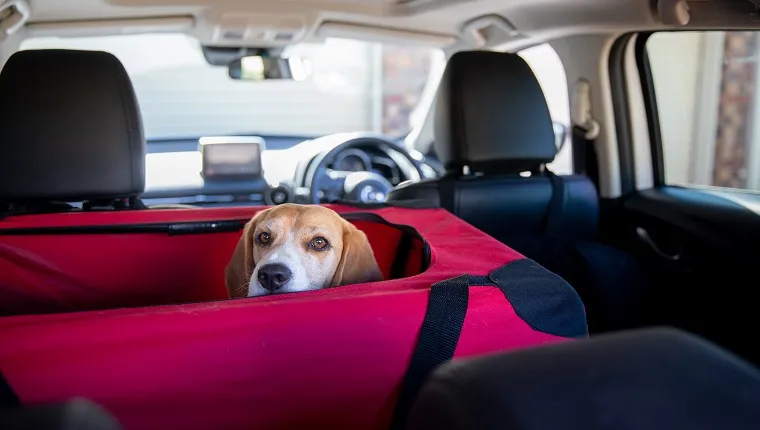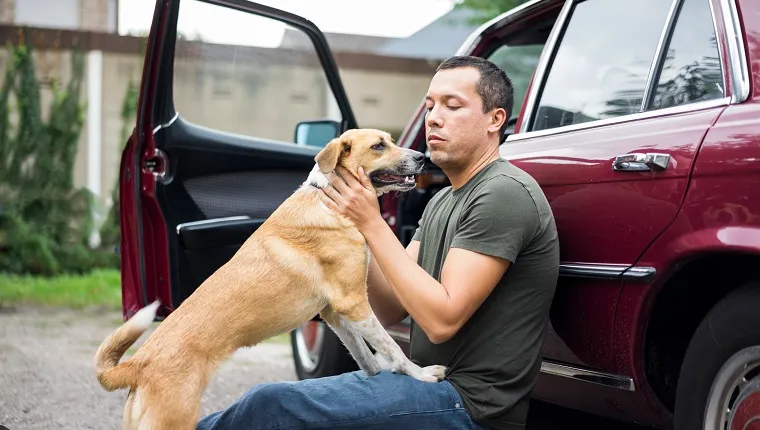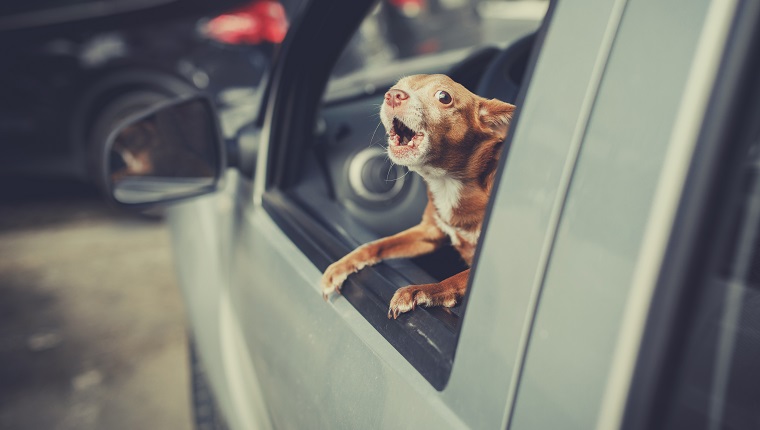Many dogs absolutely love the idea of a car ride, and some would prefer to stay on their own four paws to travel. Whether they enjoy the journey or not, some dogs bark incessantly only in the car. That can be a big distraction when you’re behind the wheel.
Occasionally, you may take your dog to the vet in the car, which they probably don’t like, so some protest barks are understandable. Maybe the vast majority of the time you’re headed to the dog park, which your pooch loves, and they bark anyway.
Some dogs will vocalize because they are fearful. Others will become very excited by the road noise and the view out the car window. Still others may get excited because they anticipate something very good or bad at the end of the ride.
The good news is there are a few very basic but effective things that can be done to improve the situation without identifying the exact cause of your dog’s barking.
A Loose Dog Is A Danger
The first thing to consider is where your dog is riding in the carg. Dogs, just like children, should be safely secured in the car. In the event of an accident a “loose” dog can be very seriously injured.
Also, every few months I see a news story about a dog who’s lost or injured after a car accident because they ran from the scene, often right into traffic.
Dogs who are free to roam in the car can cause a whole set of issues before a crash even occurs.
A loose dog can interfere with the driver’s ability to drive, to see out the window, and can present an irresistible distraction if they are interacting with children or trying to open or eat packages.
But more to the point, a dog who’s free to roam around a vehicle can pass the time by looking out the window and barking at things as they fly by. This temptation is just too much for some dogs, and some can become very agitated by looking out the window of a moving car.
A Soft Crate & Toys Can Keep Them Safe & Calm

I am a fan of using a crate to transport dogs. A well-secured “soft” crate provides a safe and comfortable place for a dog to travel and also keeps them from becoming too interested in or afraid of the view.
This of course means that your dog must be crate-trained, and you may have to make an effort to acclimate them to the new crate if it’s very different from what you’re using at home.
A crate also makes it very easy to implement another suggestion for cutting down on barking: give them something else to do. While they’re in the crate, give them a KONG, a bully stick, a chew, or whatever sort of toy will keep them occupied.
All of my dogs have a special toy that they only see when we ride in the car.
Seat Belts & Other Accessories
If a crate is just not an option, there are quite a few good doggy seat belt products available. If you need to use one of them, make sure to read reviews and ensure that the one you choose has been safety tested.
Window shades may help as an option for cutting down on your dog’s view of the road. They can reduce your dog’s fear or excitement that may be the cause of some of their barking.
It’s also best to strap a dog in the back seat, as passenger air bags present the same risk to dogs as they do to small children.
Train The Barking Away, Even Outside Of The Car

Once you have addressed where your dog will ride, you can start to think about some basic training for how they will ride. You want your dog to sit or lie down quietly during the ride, so practice that behavior!
If you don’t have a solid “down” and “stay” command outside of the car, work on those first. But keep in mind — you can’t drive and feed your dogs treats at the same time, so you’ll need to fade the treats and replace them with praise before you are ready to hit the road.
Once you have mastered a quiet “down” outside the car, practice in the driveway with the car shut off, then with it running, and gradually work your way up to short car rides.
It’s also worth the effort to try to find a toy that holds your dog’s interest and use that to reinforce the quiet behavior.
Don’t Accidentally Reward Barking
Last, but by no means least, are you somehow reinforcing the barking? If you are repeatedly shouting “quiet!” or “no!” when your dog is barking you may actually be rewarding the behavior rather than punishing it.
Also, are you letting them out of the car and into the dog park while they’re still barking? That is definitely a reward! Even if they end up at the vet instead of the park sometimes, the park is most likely a big enough reward that barking every time seems worth it!
While it may require the patience of a saint — and the ear protection of a construction worker — do not let them out of the car or the crate if they’re barking. This is very important and absolutely worth the effort.
If you can be completely consistent with enforcing quiet before they can leave the car, it will have a tremendous impact.
Does your dog bark when they’re in the car? How do you help them relax and quiet down? Let us know in the comments below!









